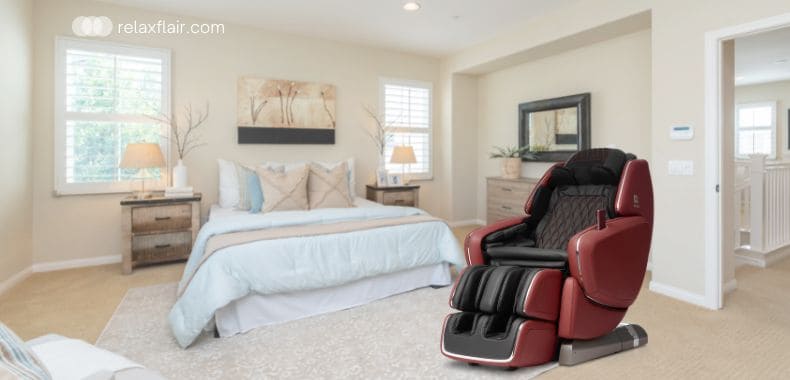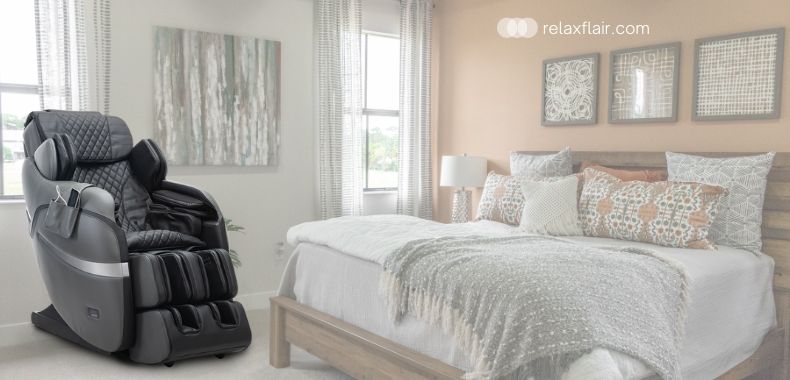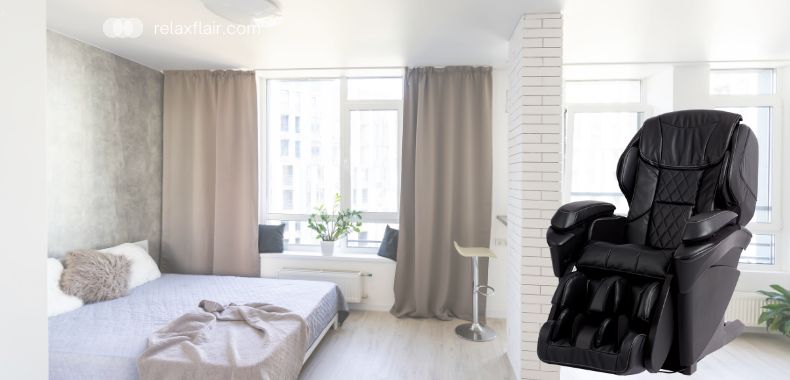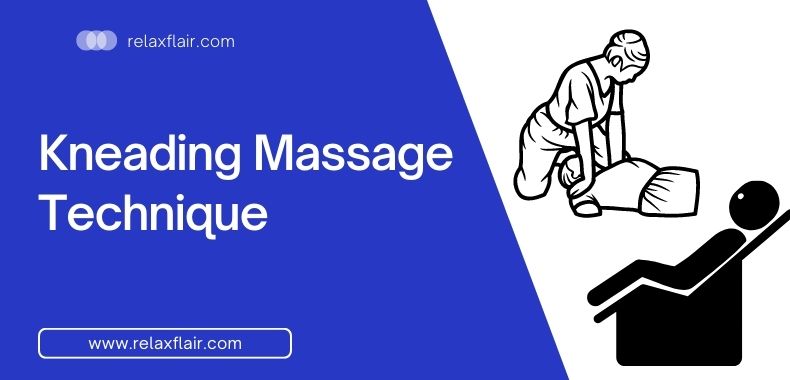Kneading massage is a type of therapeutic massage that uses pressure and movement to release tension and knots in the muscles. This type of massage is often used to relieve pain, increase the range of motion, and improve circulation. Kneading can be performed with the hands, elbows, or forearms. This type of massage is often used to relieve pain, increase the range of motion, and improve circulation. Kneading can be performed with the hands, elbows, or forearms.
.
What is a Kneading Massage?

A kneading massage is a popular and common massage technique that is used to loosen and relax muscles. This type of massage employs the use of the therapist’s hands to make circular, deep-pressure movements on the muscles.
The therapist will start by gently placing their hands on the person’s back. They will then use their thumbs and fingers to make small, deep circular motions. As they move their hands around, they will apply pressure to different muscle groups.
This type of massage is beneficial for people who are looking to relax and relieve tension in their muscles. It is also helpful for people who suffer from muscle pain or stiffness.
What are the Forms of Kneading?

- Hand Kneading: The gluten matrix in our bodies is a complex network that needs to be explored and Folded. It can take 10-30 minutes for us sometimes, but we will eventually reach an optimal state of well-being with repeated folding or stretching!
- Mechanical Kneading: This takes about 8-12 minutes and is the most efficient way to knead flour dough.
Body Parts Treated by Kneading

There are many common body parts that can be treated with kneading. They are:
- Neck
- Shoulder
- Upper back
- Calf
- Lower back
- Thigh
.
What are the Benefits of Kneading?

Kneading can also be performed on other areas of the body and be effective to reduce pain and muscle tightness.
The main benefits are:
- Lowered muscle pain
- Reduced tension
- Decreased stress
- Improved flexibility
- Stimulates the lymphatic system, which helps to eliminate toxins from the bloodstream.
Kneading is an effective technique to reduce stress. Massage therapy can provide benefits for both your physical and emotional health and even help acute mastitis treatment as it has been shown in studies that have found reduced levels of cortisol after subjects received passive shakes from professionals who used kneading techniques on them!
Physiological Effects of Kneading

Massage provides important physiological effects, such as:
- Increased vasodilation
- Elevated tissue elasticity
- Increased capillarization
Kneading is an excellent way to stimulate blood flow because it increases the number of capillaries. That means there’s more oxygen and nutrients being delivered to your muscles, which keeps them healthy! It also produces vasodilation or “the dilating” effect on soft tissues-this helps increase cellular exchange so you get even better results from this workout session by allowing increased delivery with less effort.
Kneading in Massage Chairs

The massage chair’s kneading technique is one of the most popular options for people who want to get a good, hard workout. The feeling can be very similar to if you were exercising at home but without all that sweaty stuff!
In addition, there are many programs on these chairs which offer Auto mode or Full Body Kneading + Tapping depending on how rigorous your needs may seem that day. If you have never experienced a massage chair before, we highly recommend that you try one out! They are becoming more and more popular for a reason they work great!
How to Choose a Kneading Massage Chair

There are a few things to keep in mind when choosing a kneading massage chair. First, you’ll want to consider the intensity of the massage. If you’re looking for a gentle massage, you may not need a chair with as much power. However, if you’re looking for a more intense massage, you’ll want to choose a chair with more power.
Also, massage chairs with 3D or 4D variable roller technology provide a more natural kneading sensation that mimics the feeling of a massage therapist’s hands. If this variable pressure kneading is a must-have, look for massage chairs with soft rubber rollers — never hard plastic, which can cause pain and discomfort.
You’ll also want to consider the size of the massage chair. If you’re taller or have a larger build, you may need a bigger chair. Otherwise, a standard-sized chair should be fine.
Finally, you’ll want to think about the price of the massage chair. Kneading massage chairs can range in price from a few hundred dollars to a few thousand dollars. You’ll want to choose a chair that’s within your budget.
With these things in mind, you should be able to find the perfect kneading massage chair for you.
Top Massage Chairs with Kneading Feature:
OHCO M.8

With its sleek design and superb handling, the OHCO M.8 is a chair’s dream come true for car lovers who follow circuit racing closely. The workmanship behind this massage recliner was done in collaboration between Ken Okuyama himself as well as Shiatsu Master Ota Setsu (who also happens to be from Japan’s Soto school of martial arts); I can tell you that every inch has been carefully considered – even down to each ergonomic position it offers so there are no worries about neck or back pain when watching your favorite race live on TV while lounging crookedly after a long day at work.
Positive Posture Brio Sport

The Brio Sport massage chair is the first (and only) sports-specific recovery device on market. It’s like having your own personal fitness clinic at home with programs from experts in various fields including physical therapists who agree that after activity, it’s important for people to take some time off so they can feel better and reduce stress levels through relaxation or exercise. With this amazing product, you’ll be able to do everything possible just go ahead as long as necessary without worrying about being bored during those activities because there are plenty of ways under coverings that allow easy cleaning – whether it’s deep tissue/sports therapy massages.
Panasonic MAJ7

Imagine being able to experience deep tissue massage without leaving your home. The Panasonic MAJ7 provides an intense, maximum, and precise therapeutic session that can be delivered at any time for those who enjoy the pain associated with it — this is especially helpful if you are suffering from chronic muscle tightness or back problems. With its 4D action as well as impressive stretching movements designed specifically by experts in bodywork technology (especially hip mobilization), there’s no wonder why this chair has won over many satisfied customers already.
.
Frequently Asked Questions
What Muscles Does Kneading Work?
Kneading focuses on working the muscles of your upper body, specifically your arms, shoulders, and upper back. This technique, commonly used in massages, aims to help you relax, improve blood flow, and relieve muscle tension.
When you’re being kneaded, the massage therapist applies pressure and manipulates the soft tissues in your arms, targeting muscles like the ones responsible for flexing and extending your wrists and fingers. These movements engage muscles such as the ones in your forearm called the flexor carpi radialis, flexor carpi ulnaris, and extensor carpi radialis longus.
The therapist also focuses on your upper back and shoulder area, targeting muscles like the trapezius, rhomboids, and levator scapulae. These muscles play a role in moving your shoulders, keeping your shoulder blades stable, and supporting good posture. By kneading these muscles, tension, and knots can be released, which is especially helpful for people who experience chronic stress or spend long hours sitting.
Additionally, kneading can affect the muscles in your chest, specifically the pectoralis major and minor. These muscles are involved in moving your arms and contribute to your overall posture and upper body stability.
In summary, kneading primarily works the muscles in your upper body, including the muscles in your forearms responsible for wrist and finger movements, the muscles in your upper back and shoulders that help with shoulder movements and stability, and the muscles in your chest involved in arm movements and posture. By applying pressure and manipulating these muscles, kneading helps you relax, improves blood circulation, and relieves muscle tension.
Is Kneading Dough a Good Workout?
The kneading dough can provide a moderate workout for your upper body muscles, particularly the arms, shoulders, and core. This culinary activity involves the repetitive motion of pressing, folding, and turning the dough, which engages several muscle groups.
When kneading dough, the primary muscles involved are the flexor and extensor muscles of the forearm. These muscles include the flexor carpi radialis, flexor carpi ulnaris, and extensor carpi radialis longus. They are responsible for the movement of the wrist and fingers, enabling you to apply force and manipulate the dough effectively.
Additionally, the muscles of the upper arms, such as the biceps brachii and triceps brachii, also contribute to the kneading process. These muscles are engaged as you exert force and control the movements required to work the dough.
Moreover, the repetitive nature of kneading activates the muscles of the shoulders and upper back. Muscles such as the deltoids, trapezius, and rhomboids are involved in stabilizing the shoulder joint and supporting the movements of the arms during the kneading process.
Furthermore, the engagement of the core muscles is essential for maintaining stability and proper posture while kneading dough. The muscles of the abdomen and lower back, including the rectus abdominis, obliques, and erector spinae, are activated to provide support and balance during the kneading motion.
In summary, kneading dough can offer a moderate workout for various muscle groups in the upper body. It targets the forearm muscles responsible for wrist and finger movements, engages the upper arm muscles involved in force exertion, activates the shoulder and upper back muscles for stabilization, and requires core muscle engagement for posture and stability.
While not an intense workout, kneading dough can still provide a beneficial physical activity, especially when performed over a significant duration or with a substantial amount of dough.
